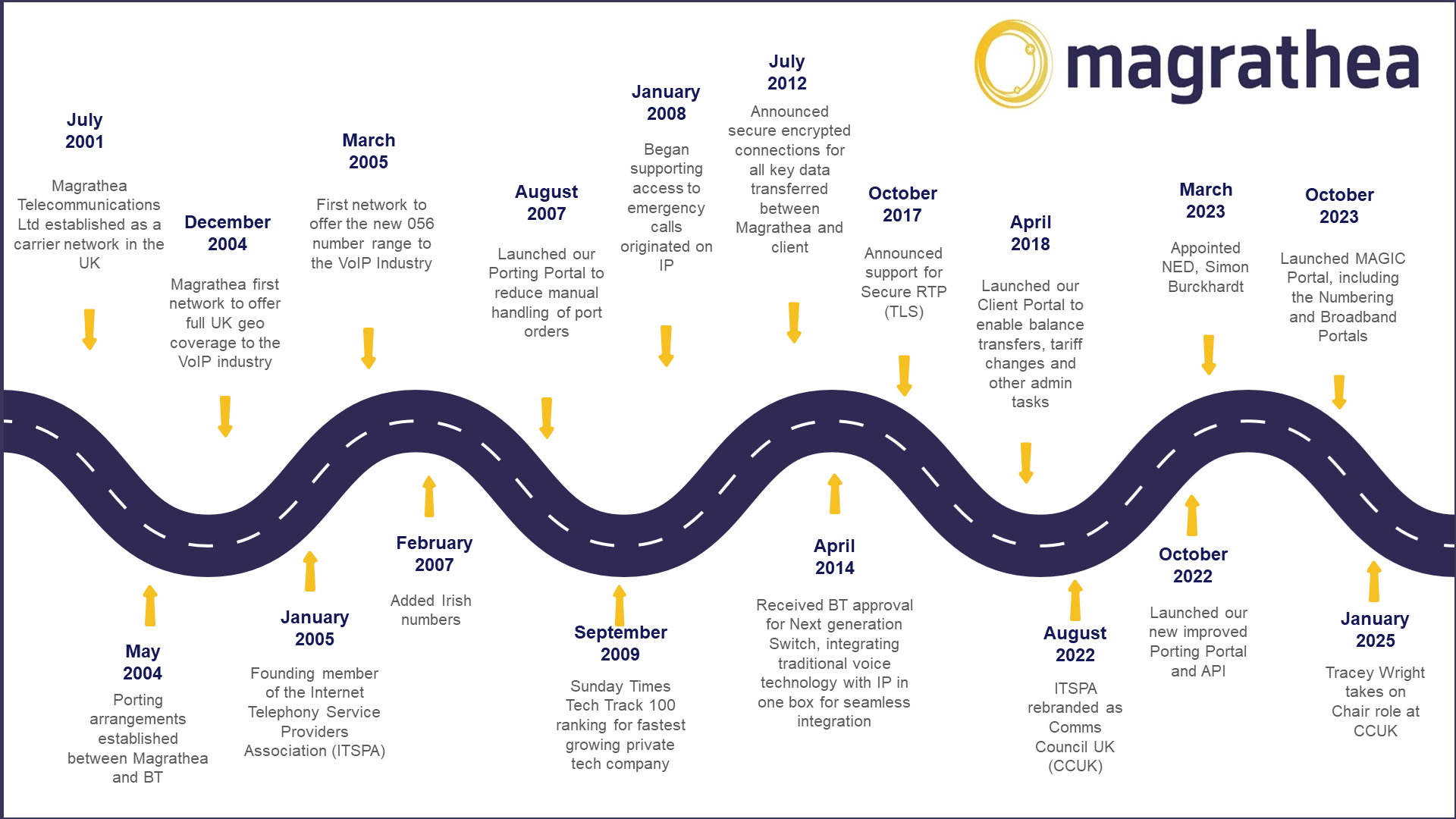Posted on: 21st August 2025, by Magrathea
To embrace our younger readers, we start with a quick explanation of what we mean when talk about the TDM, or ‘traditional’ network (often called the ‘old network’). Skip ahead if you’ve been in this game a while!
Time Division Multiplexing was the core technology used to support the UK telephony network since as early as the 70s but more widely from the 80s. You will hear the old guard talk about E1s, time slots and channels. An E1 is essentially a TDM trunk that could carry 30 call channels, it has 32 ‘time slots’ (two are for signalling, 30 for calls).
So, if you wanted to increase capacity between two networks you added more E1s, enabling you to carry more calls. For context, with an E1 only being able to manage 30 simultaneous calls, that meant approximately 300,000 minutes per month, per E1. A large number of E1s are needed to handle billions of minutes passing around the UK network every day!
To support this technology there were large bits of kit – switching equipment is chunky and takes up a lot of physical space and of course all the support systems that such a setup demands. Alongside this there are vast amounts of cables connecting everything together. Larger networks such as BT housed all this in huge buildings, often combined with their local network exchange, which of course meant thousands of strands of copper coming out of each building too.
As it has aged, the TDM network that underpins much of the UK has caused its fair share of challenges in terms of support and reliability. Hardware issues aside, finding people with the knowledge and experience managing these networks is increasingly difficult. Therefore, it’s with mixed emotions we say goodbye to our last TDM interconnect with BT this Autumn.
As a relatively new carriers to the market, we have always operated with a mix of TDM interconnects and IP interconnects as a means to collaborate with other carrier networks. Each have taken a different approach, some running both technologies in tandem, others fully embracing IP many years ago.
Aside from a couple of legacy anomalies, it’s only BT that we had any significant interconnects with via TDM in recent years and this has been declining steadily as we continued the process of migrating traffic across as and when it made commercial and technical sense to do so. We are right at the end of this process so technically it holds no fear for us and apart from the team here chomping at the bit to tidy away all the legacy guides, monitoring and everything else that we won’t need when the TDM interconnects disappear – there is little for us to do – but we can’t let the occasion pass without acknowledging how well the ‘traditional’ network has served us over the years.
As we say a fond farewell to our final TDM interconnect with BT this autumn, the timing feels especially poignant; we have entered our 25th year as a carrier network. Here are some of our milestones that have shaped our journey so far:

As you can see from just a few of our bigger highlights, we’ve kept ourselves busy over this period and have enjoyed working alongside all of our clients, industry partners and colleagues who continue to drive us forward to deliver a robust and reliable network.
As we retire the TDM, our focus remains firmly on IP and beyond, evolving with our clients and embracing new challenges with the benefit of 25 years of experience. And while we welcome the changes ahead, we can’t help but look back on the TDM network (and even the old phone boxes!) with real fondness, for all the good it has done: enabling the nation to communicate for half a century, and supporting us and our clients on our own journey.
Goodbye TDM, and thank you.
“Progress is impossible without change, and those who cannot change their minds cannot change anything.” George Bernard Shaw